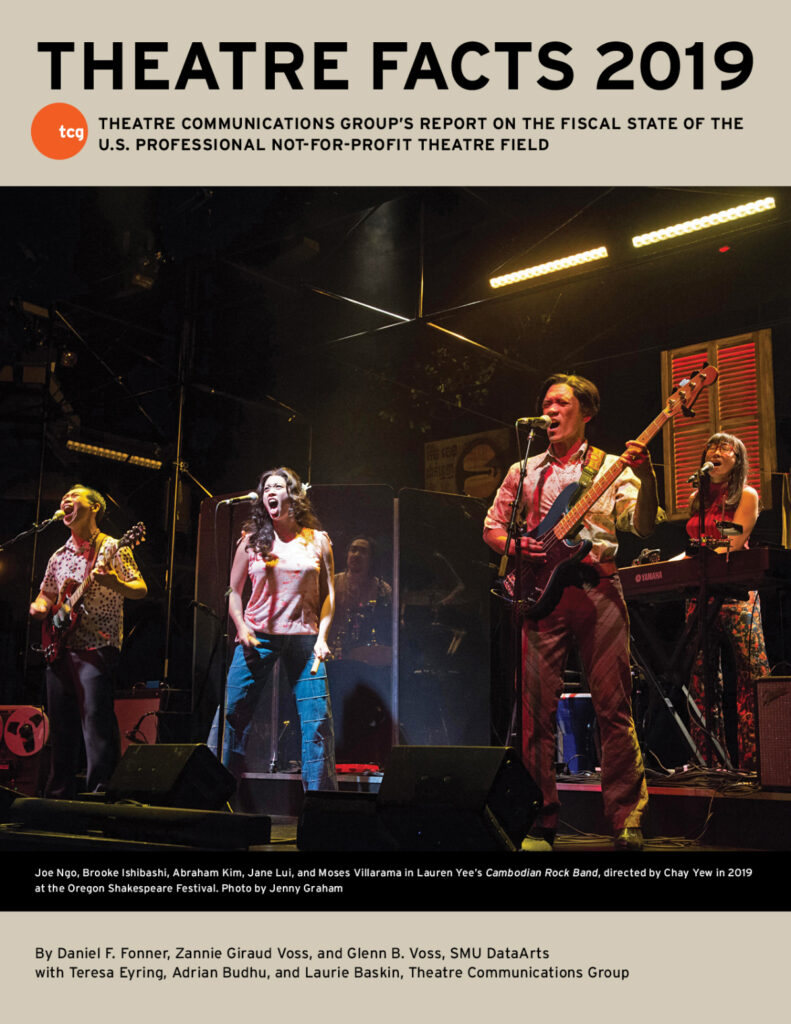Not-for-profit theatres contributed nearly $2.8 billion to the U.S. economy and attracted 38 million attendees, according to Theatre Facts 2019, released by Theatre Communications Group (TCG). Based on the annual TCG Fiscal Survey, Theatre Facts is an in-depth report that examines the attendance, performance, and overall financial state of the U.S. professional not-for-profit theater field. The 40th and final edition of the research report, Theatre Facts 2019 represents a valuable look at the state of American theater on the eve of the pandemic. Read at: https://circle.tcg.org/resources/research/theatre-facts.
“For over 45 years, TCG has provided in-depth longitudinal research on the state of the field, from attendance numbers to expenses to working capital,” said Teresa Eyring, executive director, TCG. “Theatre Facts 2019 provides a critical perspective on the fiscal state of our theater ecology before COVID-19, and the largest protest for racial justice in our country’s history, transformed our field. As a vital historical record, Theatre Facts 2019 documents the financial successes and challenges theatres faced, helping us collectively imagine new ways of supporting theatres and theatremakers going forward.”
Theatre Facts 2019 reflects data from the fiscal year that theatres completed between October 31, 2018 and September 30, 2019. Key findings include:
- While both earned and contributed income growth surpassed inflation, the chief driver of total income growth was earned income. The 5-year growth rates were 17.2% for earned income, 1.1% for contributed income, and 9.1% for expenses.
- Average CUNA (Change in Unrestricted Net Assets, or the difference between total unrestricted income and total expenses) was positive every year. However, the annual percentage of Trend Theatres ending the fiscal year in the black diminished over time. By 2019, fewer than half of the Trend Theatres had a positive bottom line..
- Total ticket income grew by 10%, with subscription and single ticket income representing the primary sources of earned income annually. Average single ticket income was 13.6% higher in 2019 than in 2015, while subscription income was 5.2% higher. The average number of subscribers was highest in 2015, falling 4.1% by 2019. Theatres sold 4.1% more single tickets overall from 2015 to 2019. This suggests that ticket prices increased at a faster pace than attendance.
- Growth outpaced inflation for nearly every category of contributed income. Individuals were by far the greatest source of contributed income each year. Average combined contributions from trustees and other individuals increased by 17.4%. There were also increases in the average number of other individual donors per theatre over time and in the average amount per gift.
- There were more full-time and part-time employees in 2019 than in 2015, as well as more fee-based or jobbed-in workers, and there was year-on-year growth in each of the three payroll areas. Payroll expenses accounted for 56.2% of total expenses in 2019.
- Capital campaigns have increased theaters’ long-term investments and fixed assets. However, the success of those campaigns has not translated into sufficient levels of readily available funds to meet daily needs. Negative working capital, experienced by roughly 55% of theatres every year, indicates that a theatre is borrowing funds internally or externally to meet its daily operating needs. Forty-three percent of the Trend Theatres had negative working capital in every year. This suggests that many theatres encounter serious cash flow crunches and may face serious financial trouble.
For further information on the changes experienced by the field between 2015 and 2019 and on differences in income, attendance, and expenses between theatres of various sizes, see the Trend Theatres and Profiled Theatres sections of the full report at Theatre Facts 2019 is available at: https://circle.tcg.org/resources/research/theatre-facts.

